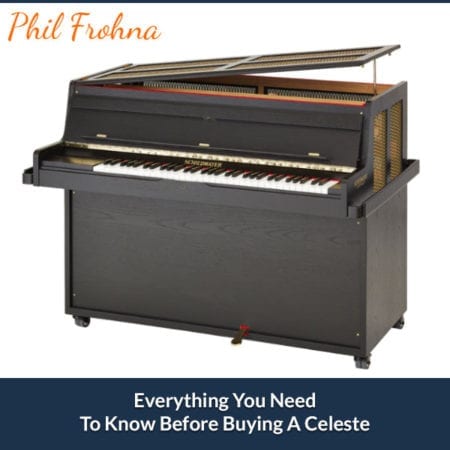 Celeste is a musical instrument that provides a bell-like sound. There is a shade of mystery about the celestes. Both celeste (called celesta sometimes) and the keyboard glockenspiel make use of a mechanism similar to that of a grand piano. It means that a person capable of playing the piano can also play these musical instruments. If you are planning to buy a celeste for your church, school, or performance hall here are some tips to guide you through the process.
Celeste is a musical instrument that provides a bell-like sound. There is a shade of mystery about the celestes. Both celeste (called celesta sometimes) and the keyboard glockenspiel make use of a mechanism similar to that of a grand piano. It means that a person capable of playing the piano can also play these musical instruments. If you are planning to buy a celeste for your church, school, or performance hall here are some tips to guide you through the process.
Understand your requirements
All institutions are different in terms of makeup and size and all of them will have requirements that vary. The factors for consideration while buying a celeste include size, model, and the number of instruments required. For instance, a piano instructing studio might be a very small space that is cluttered with books, is carpeted, and has chairs and desks. On the other hand, a university performance hall can seat thousands of concertgoers. The church venue might be an odd-shaped room that is filled with glass windows and pews. Regardless of the configuration required the celeste you select will have to meet a range of demands. Therefore, before making a buy ask yourself these questions.
· Who is going to use the celeste? It could be beginners/experts/concert artists/or international guests on tour.
· How do you plan on using the celeste? For lessons to the graduate students/church services/recordings/ or live performances.
· How often do you plan on playing the celeste? 18 hours a day as practice for students or occasional concerts.
· What is the size of the room primarily used for playing the instrument? If you are going to use a concert performance hall that seats 3000 people you may need 2 celestes; one for the rehearsals and the other for the actual performance.
· Is the celeste going to stay in a fixed location or will it move around?
Understand the instrument
Celeste is a percussion instrument having a keyboard and it comes with reverberant and unique sound quality. There are a few things you need to understand about the instrument before buying it.
· Size and thickness of the soundbar.
· Reasons behind the holes in the soundbar.
· Significance of celeste pedaling.
· Use of some unusual material for the soundbar.
· The hammer shanks of celeste vary from those of grand pianos.
· Remember, that celeste maintenance resembles that of a piano.
· You can hear the celeste from the back of a room. Keep this in mind.
Just striking a soundbar doesn’t do much in terms of sound. The sound generated will be quiet and it will not reverberate much. Due to this reason, the celestes need wooden resonator boxes that sit above the soundbars. In the case of most instruments, these resonator boxes used are graduated on 4 levels. Its bass range resonator box is on the top level, the middle range boxes are on the low right, and the treble boxes are on the lower left and center if you look at the arrangement from the rear.
Yamaha Celeste
The Yamaha celeste has the resonance boxes arranged in a single layer. It permits a lightweight and more compact body. Although the size of the body is smaller, the resonance capacity of the instrument is maintained and it produces a rich sound anyway. Apart from this, the Yamaha celeste soundbars are struck from below. It allows a more piano-like action. It also permits the performer to put more feeling into the performance. Other celestes offer a design that makes it difficult to change the intensity of the performance as they do not make much of a sound unless their keys are hit strongly.
If you have an old piano and are looking for a piano tuner in the Tampa, FL area look no further than Tampa Piano Tuning. You will get the best available advice and service for your piano from the firm. They understand pianos and can provide perfect tuning for your musical instrument.
Picture Credit: Wikipedia